Anatomy 2300 Muscles of the Head and Neck
1/17
There's no tags or description
Looks like no tags are added yet.
Name | Mastery | Learn | Test | Matching | Spaced |
|---|
No study sessions yet.
18 Terms
Muscles of facial expression
Originate on the surface of the skull and insert into the superficial fascia and dermis of skin
When they contract, they move the skin
Innervated by CN VII Facial
Frontalis m.
Draws scalp anteriorly
Raises eyebrows
Wrinkles forehead
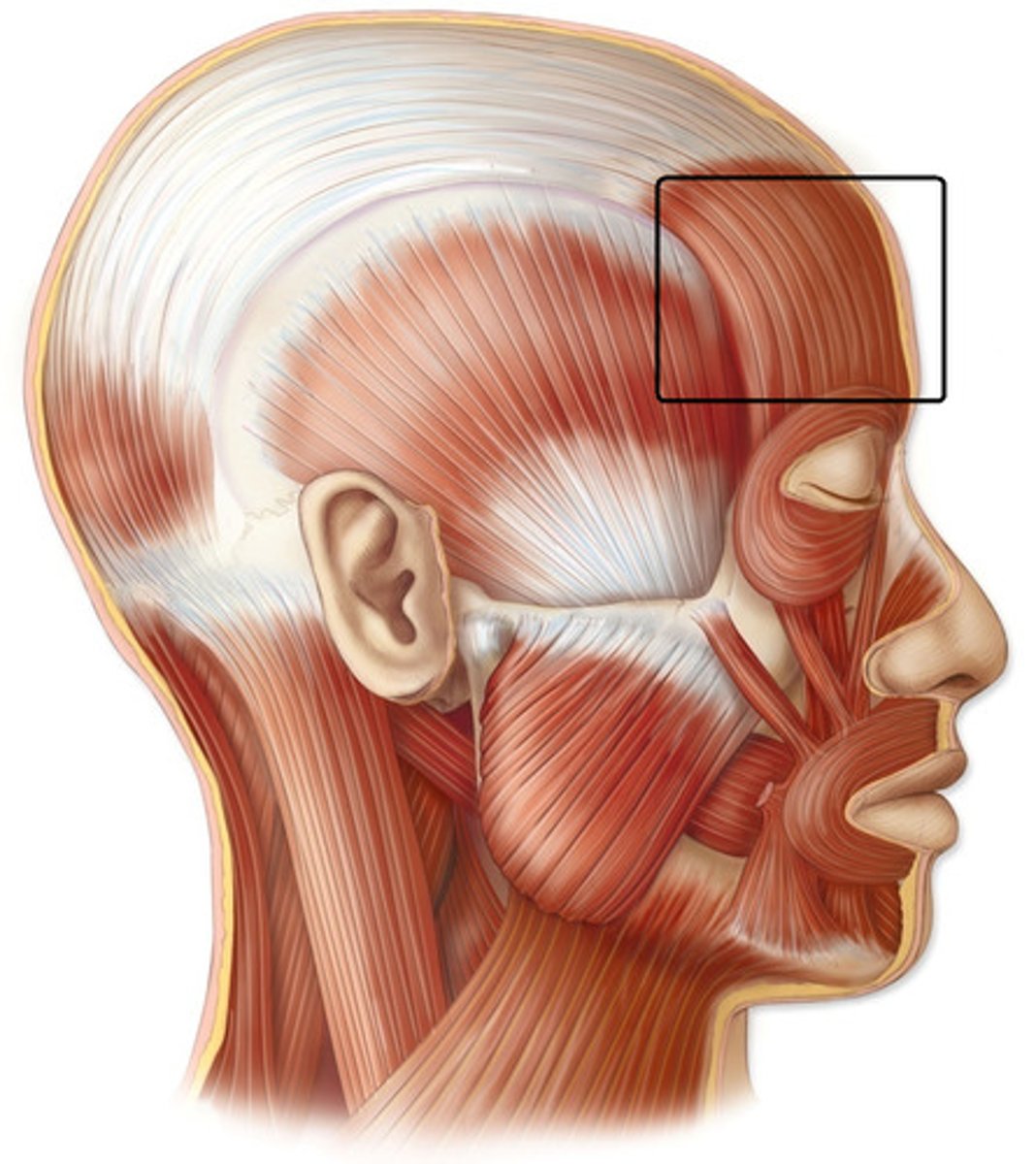
Occipitalis m.
Draws scalp posteriorly
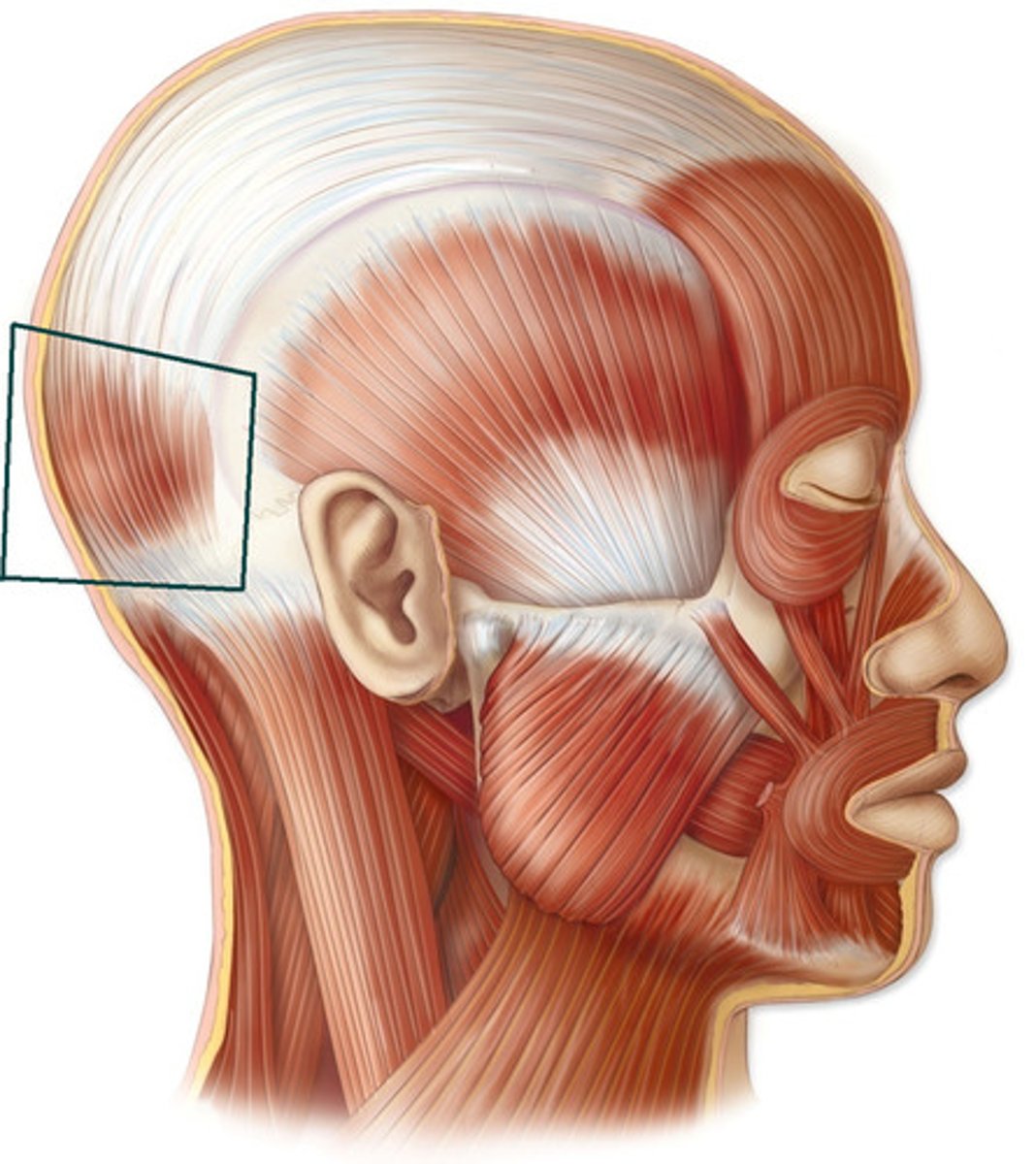
Epicranial aponeurosis
What connects the frontalis and occipitalis muscles to form the occipitofrontalis muscle?
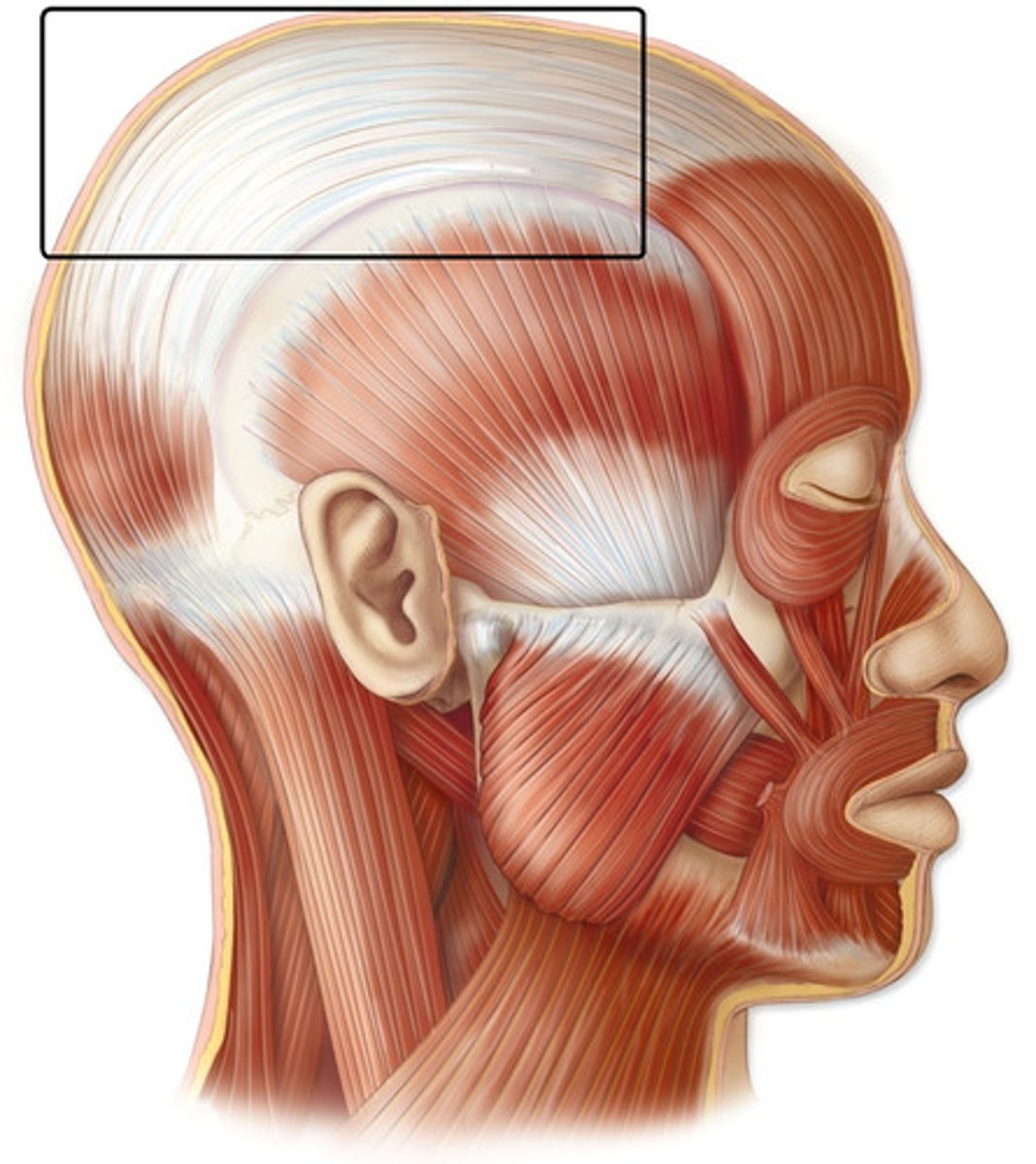
Orbicularis oculi m.
Encircles the eye
Closes the eye
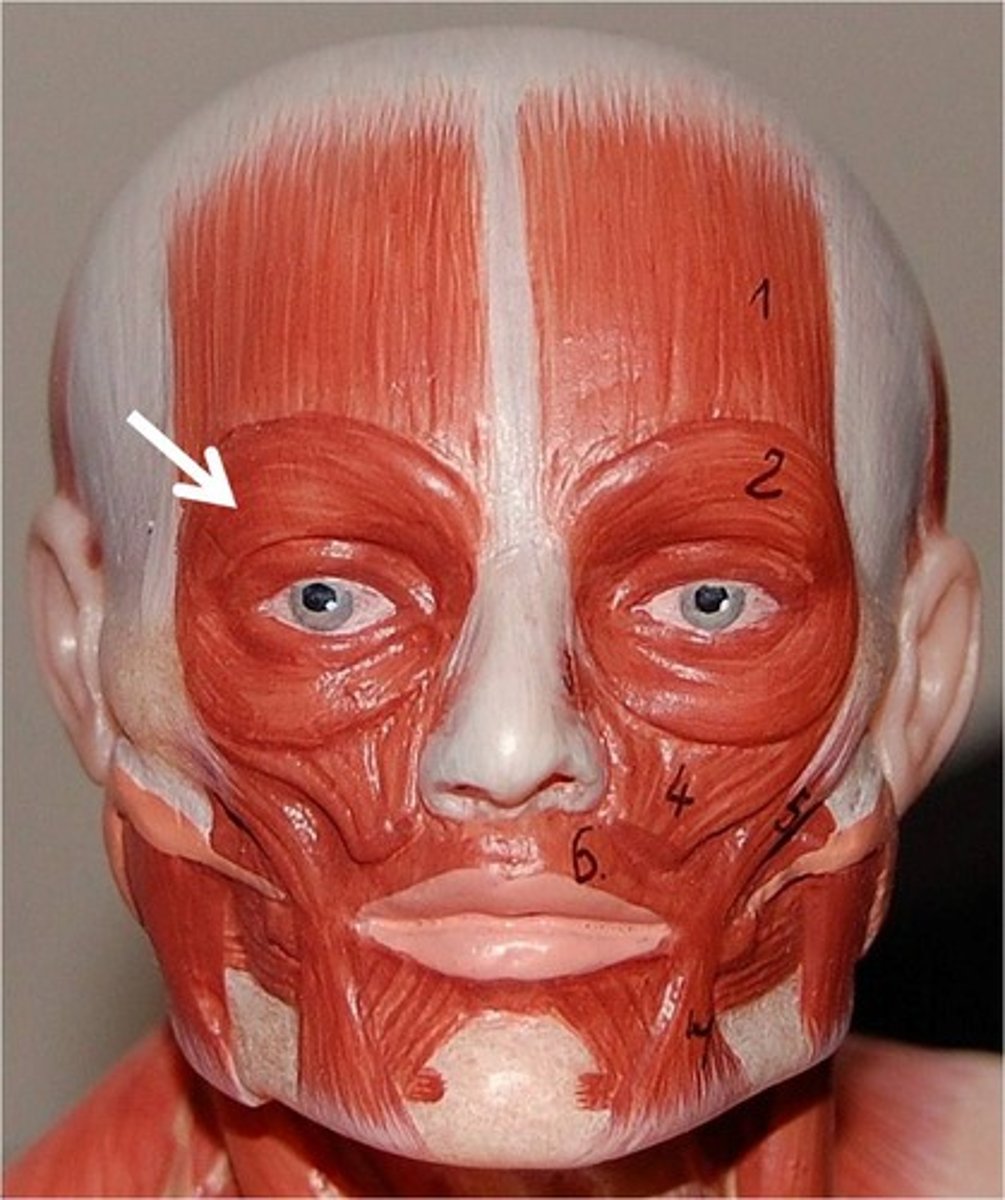
Buccinator m.
Presses cheeks against teeth and lips
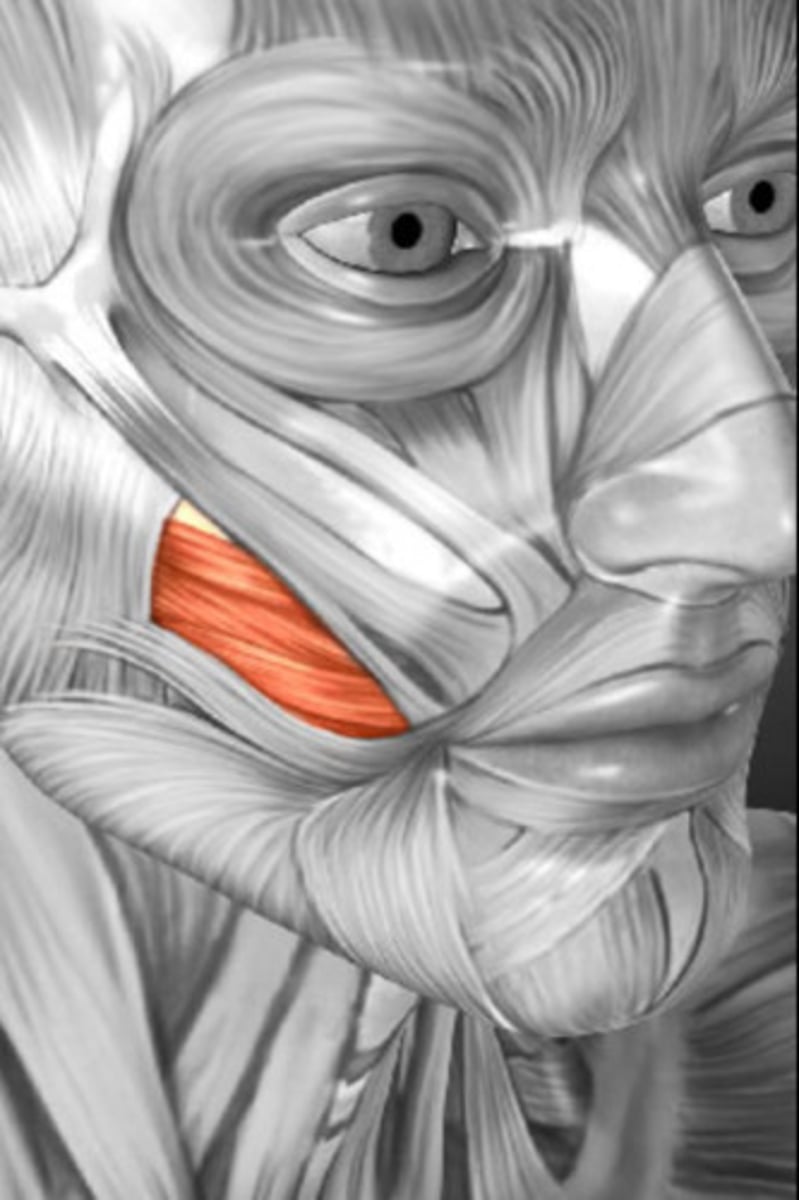
Orbicularis oris m.
Encircles the mouth
Closes and protrudes lips (duck face)
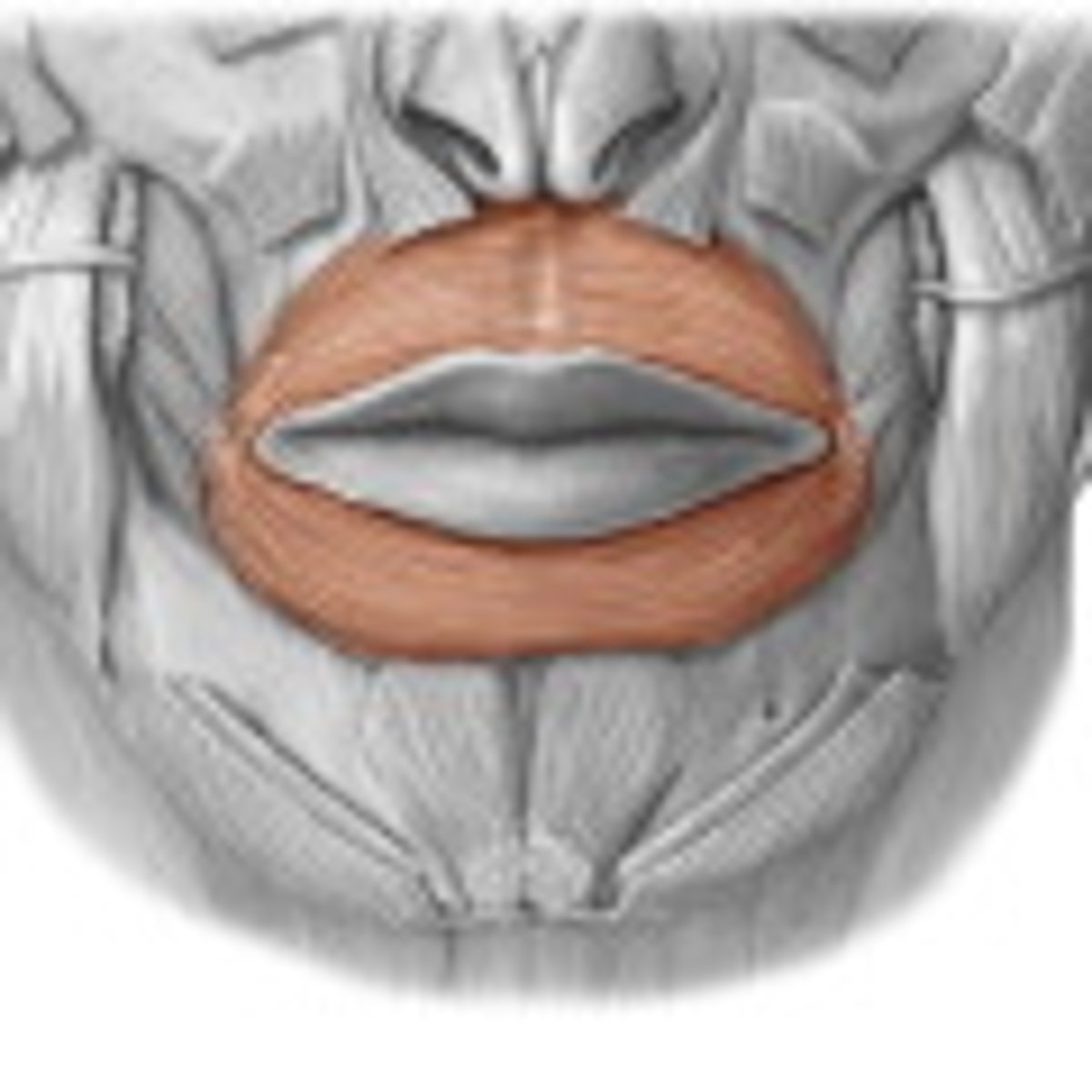
Platysma m.
Draws out part of lower lip inferiorly and posteriorly (pouting)
Tenses skin of neck
Very thin
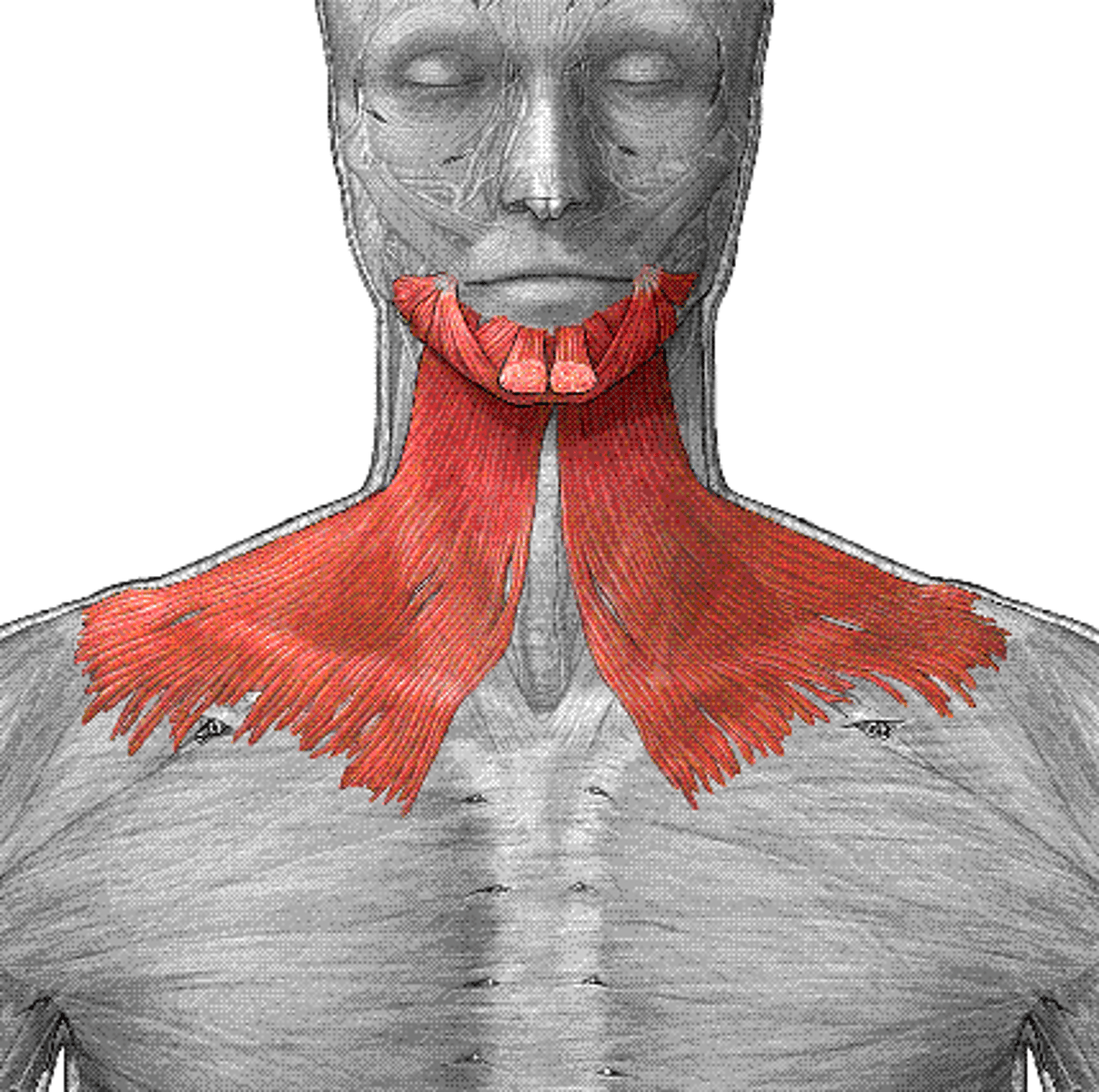
Muscles of Mastication
Origin and insertion on bone
Innervated by mandibular division of CN V Trigeminal
Temporalis m.
Runs from the temporal fossa to the coronoid process of the mandible
Elevates (closes) and retracts the mandible
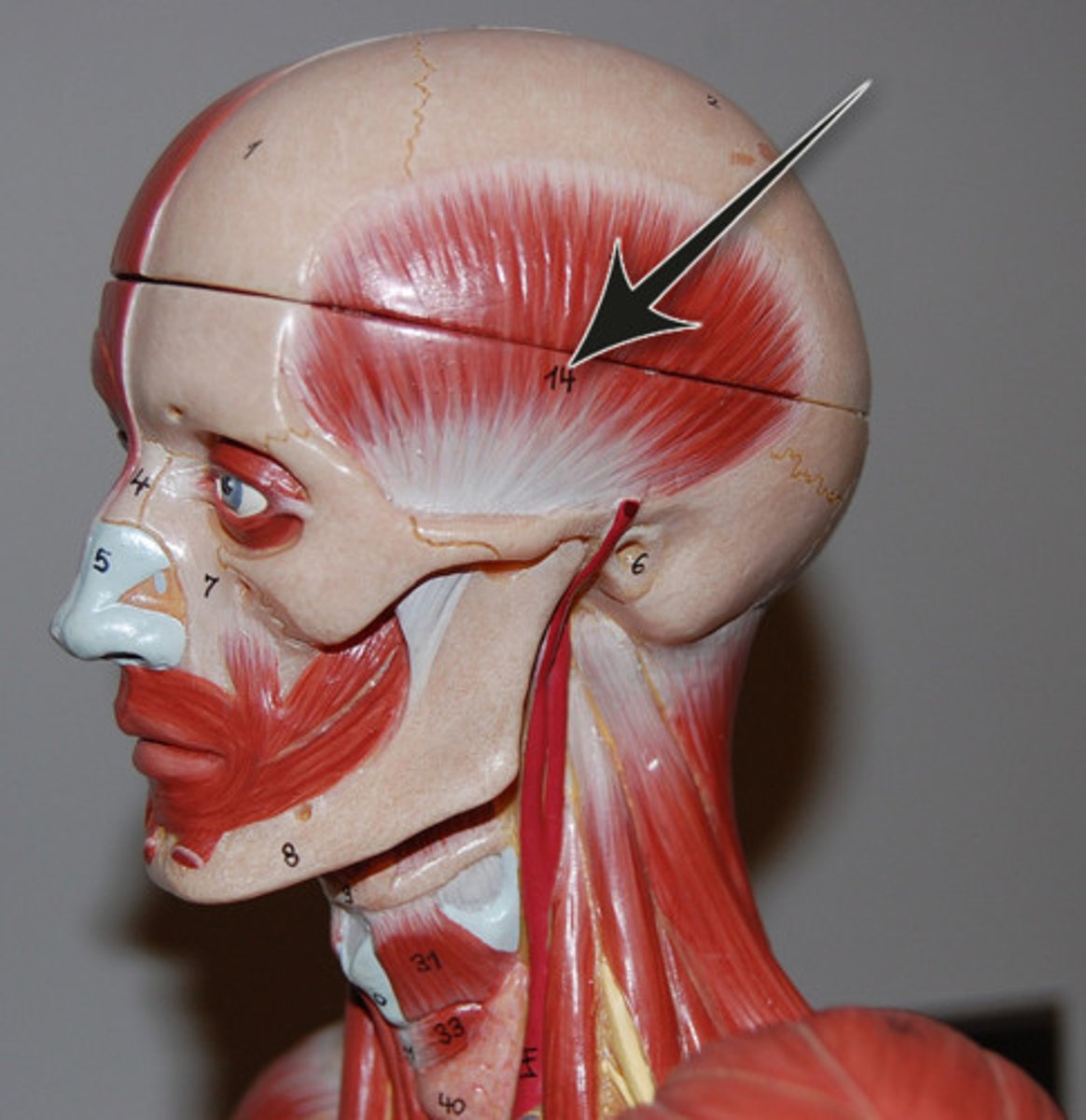
Masseter m.
Runs from the zygomatic arch to the ramus and coronoid process of the mandible
Elevates the mandible
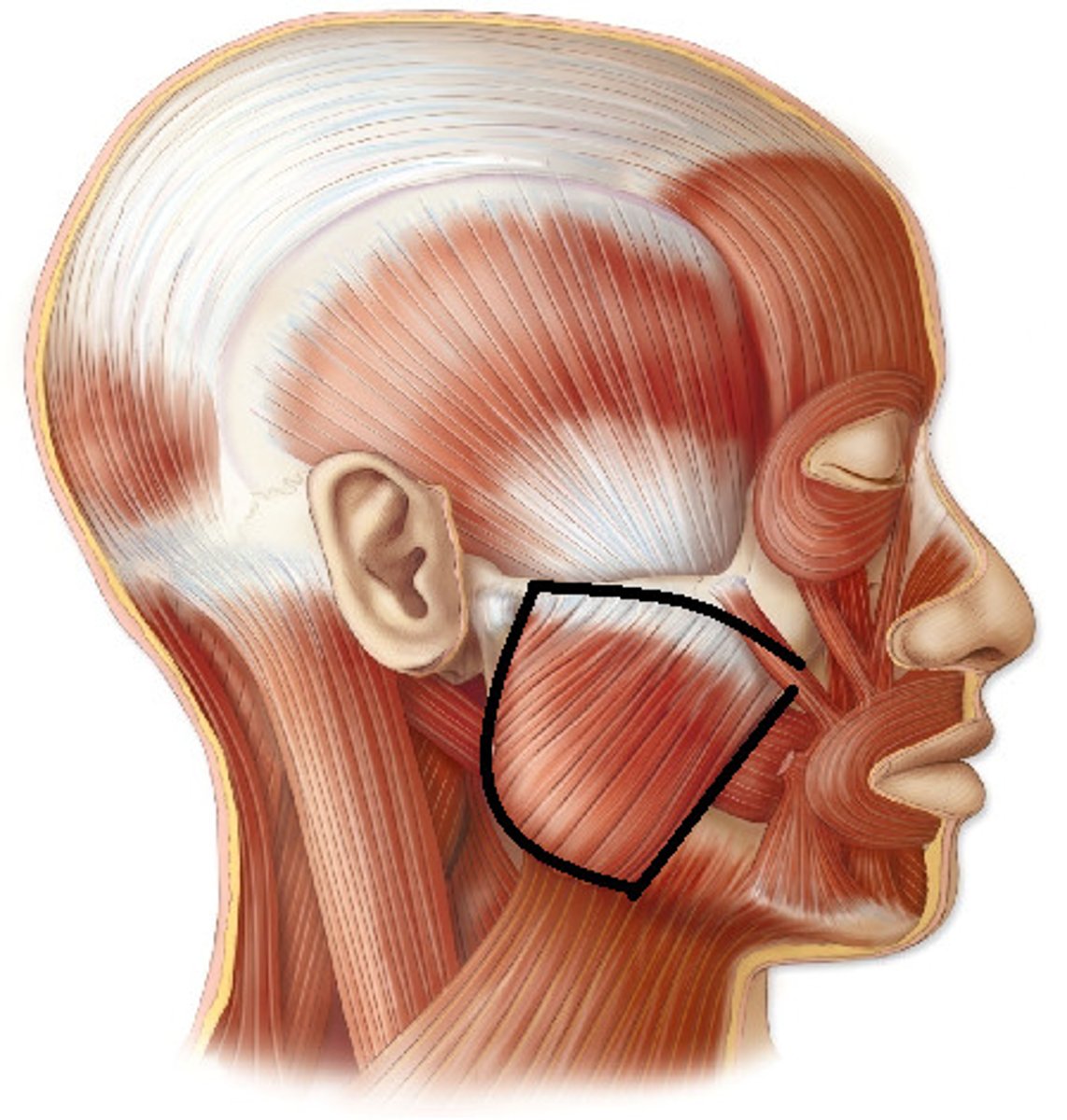
Lateral pterygoid m.
Runs from the lateral side of the lateral pterygoid plate to the condyle of the mandible
Depresses (opens), protracts, and moves the mandible side to side
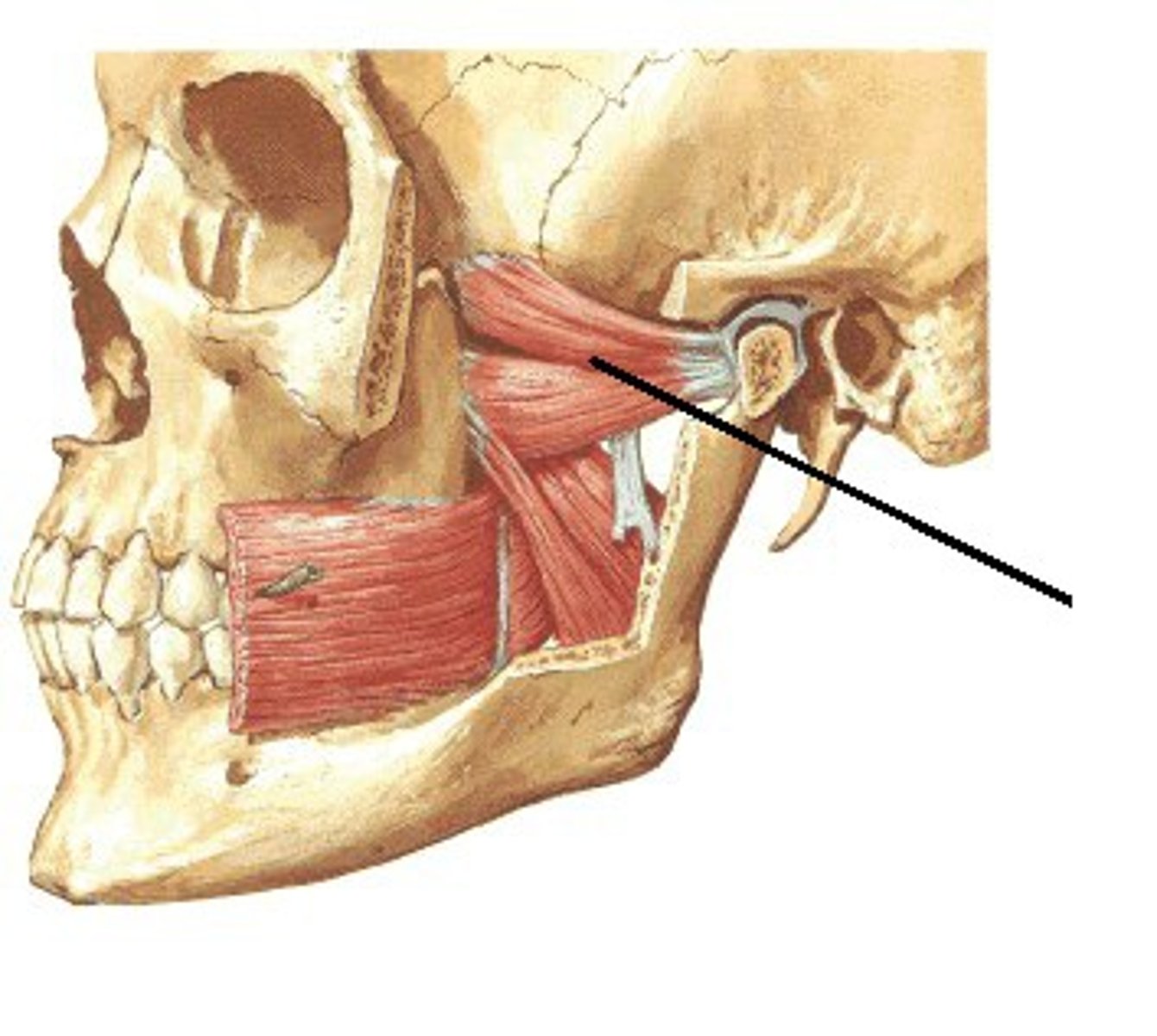
Medial pterygoid m.
Runs from the medial side of the lateral pterygoid plate to the medial surface of the angle of the mandible
Elevates, protracts, and moves the mandible side to side
The muscle shown in green in the picture
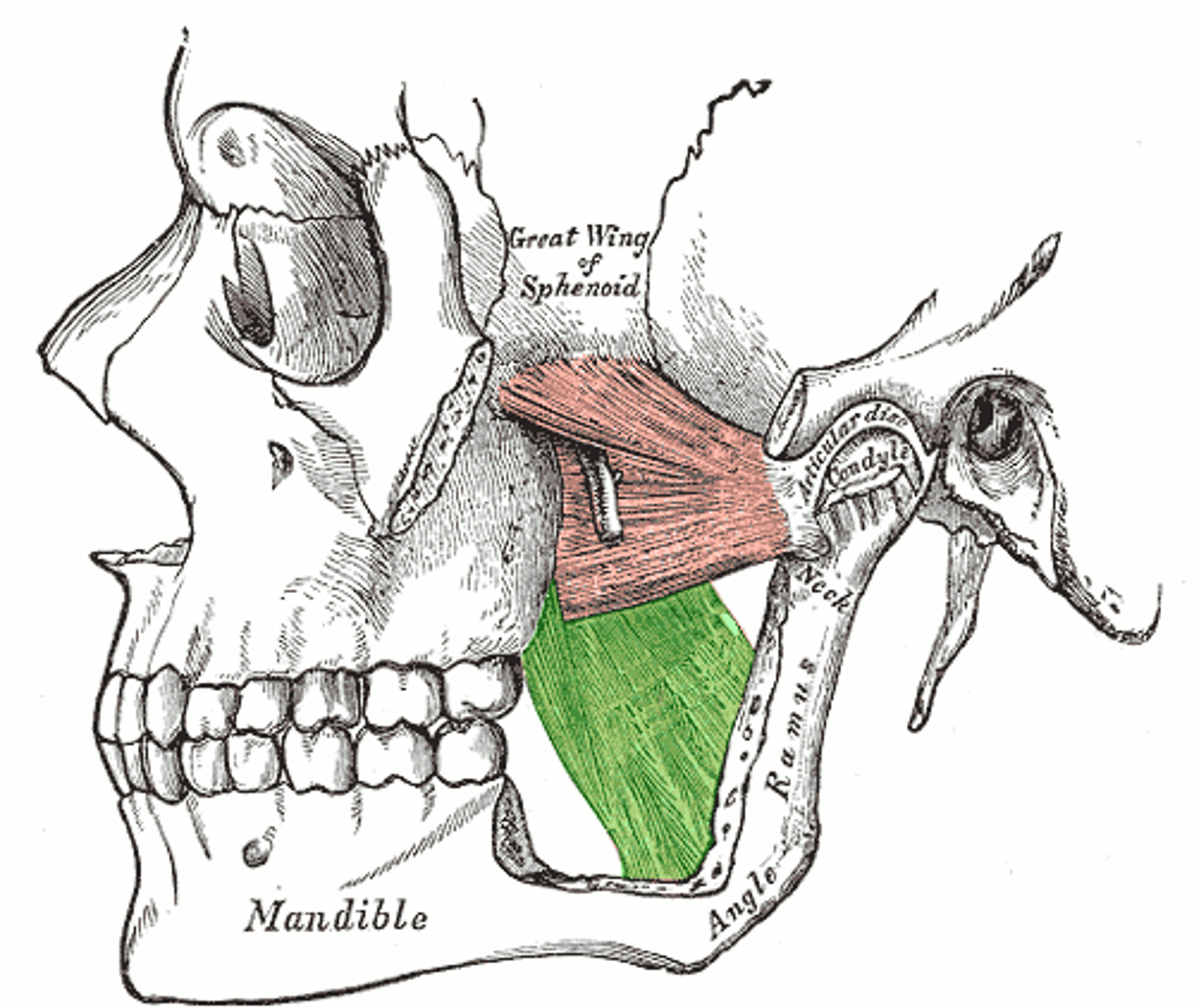
Neck muscles
Region of muscles innervated by CN XI Accessory
Trapezius m.
Elevates and retracts the scapula
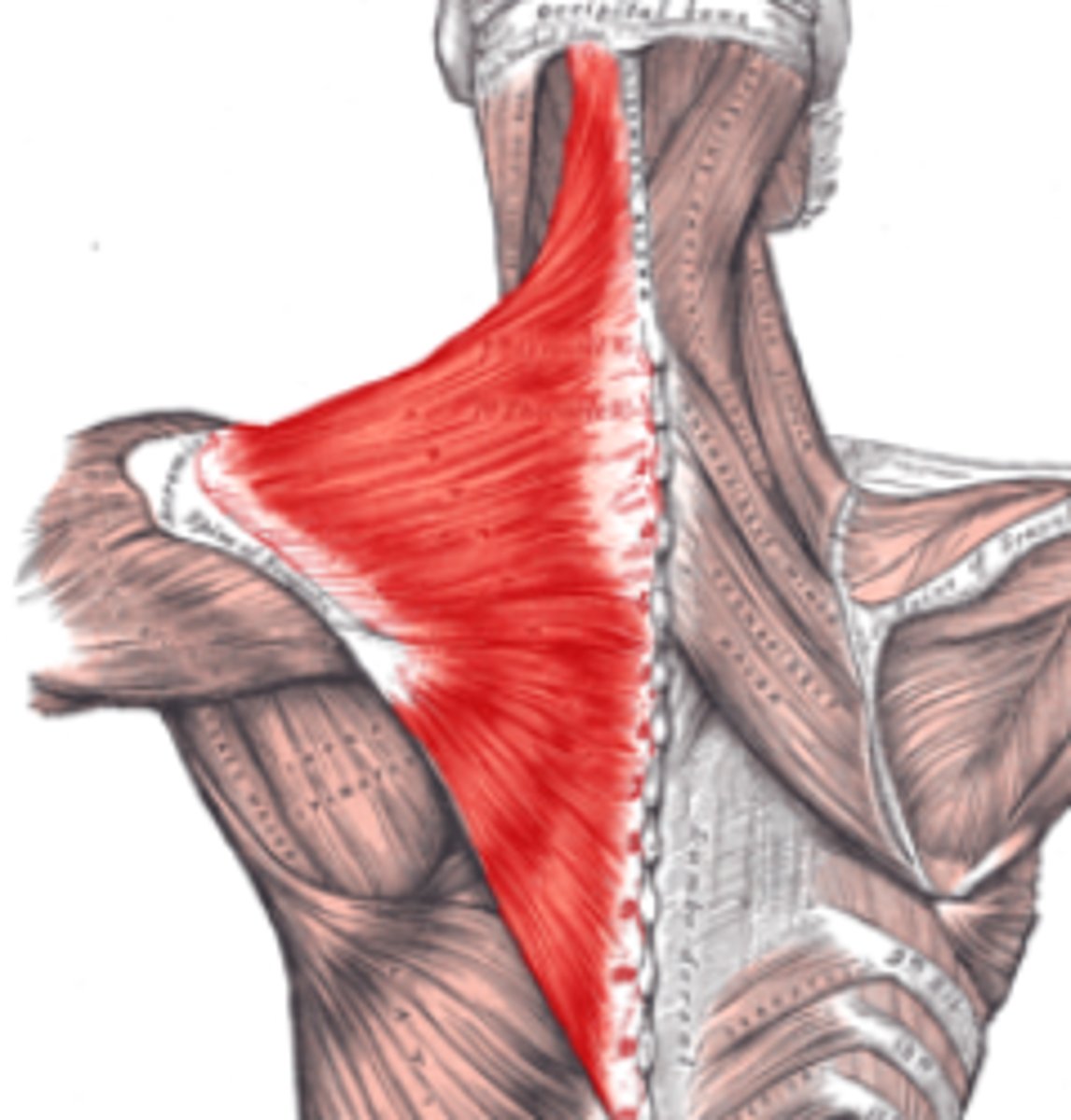
Sternocleidomastoid m.
Originates on the sternum and medial portion of the clavicle
Inserts onto the mastoid process
Bilaterally, flexes cervical portion of the vertebral column
Unilaterally, rotates head to the opposite side
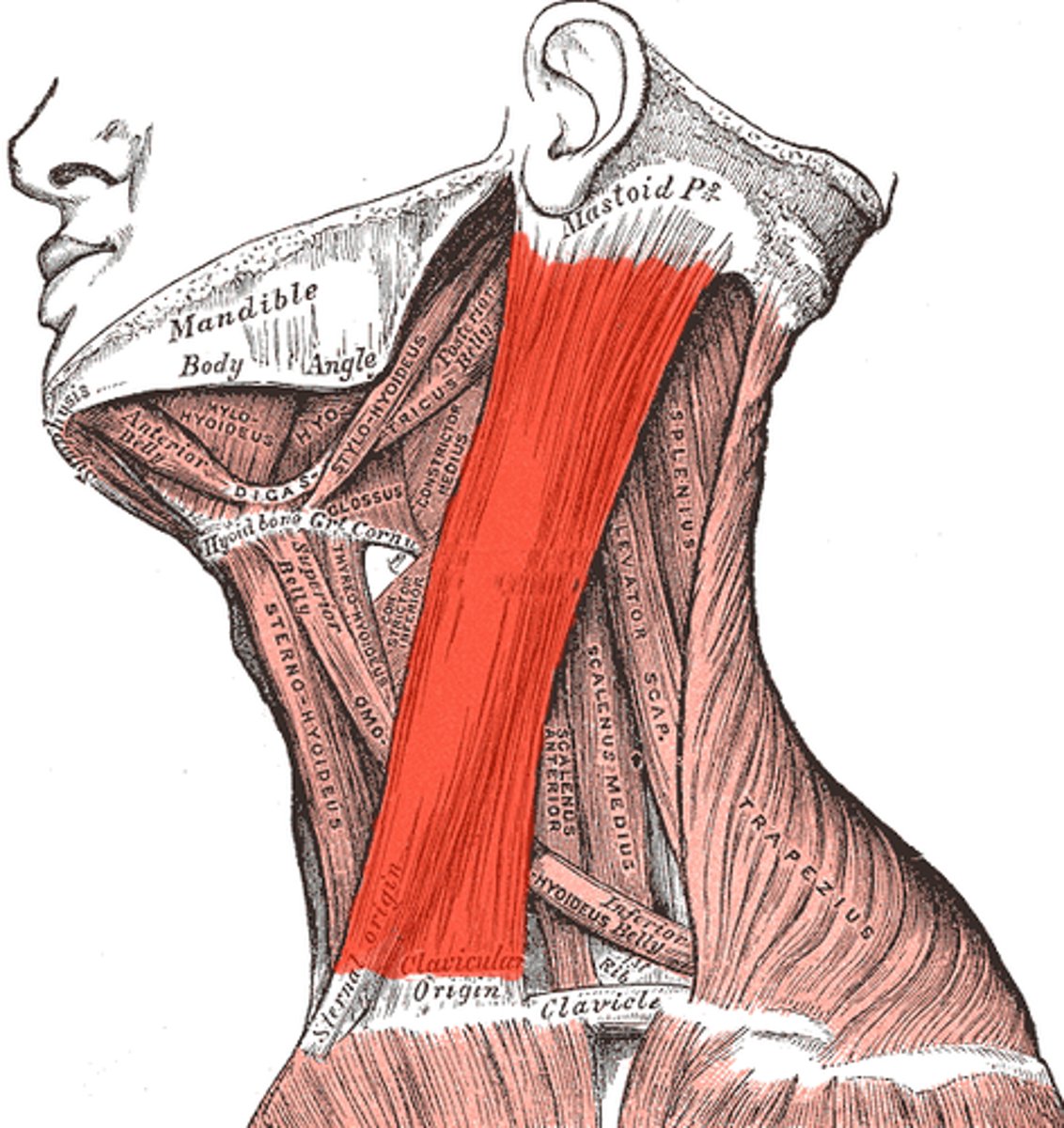
Suprahyoid muscles
Superior to hyoid bone, depresses the mandible and elevates the hyoid bone
Infrahyoid muscles
Inferior to hyoid bone, stabilizes the hyoid bone